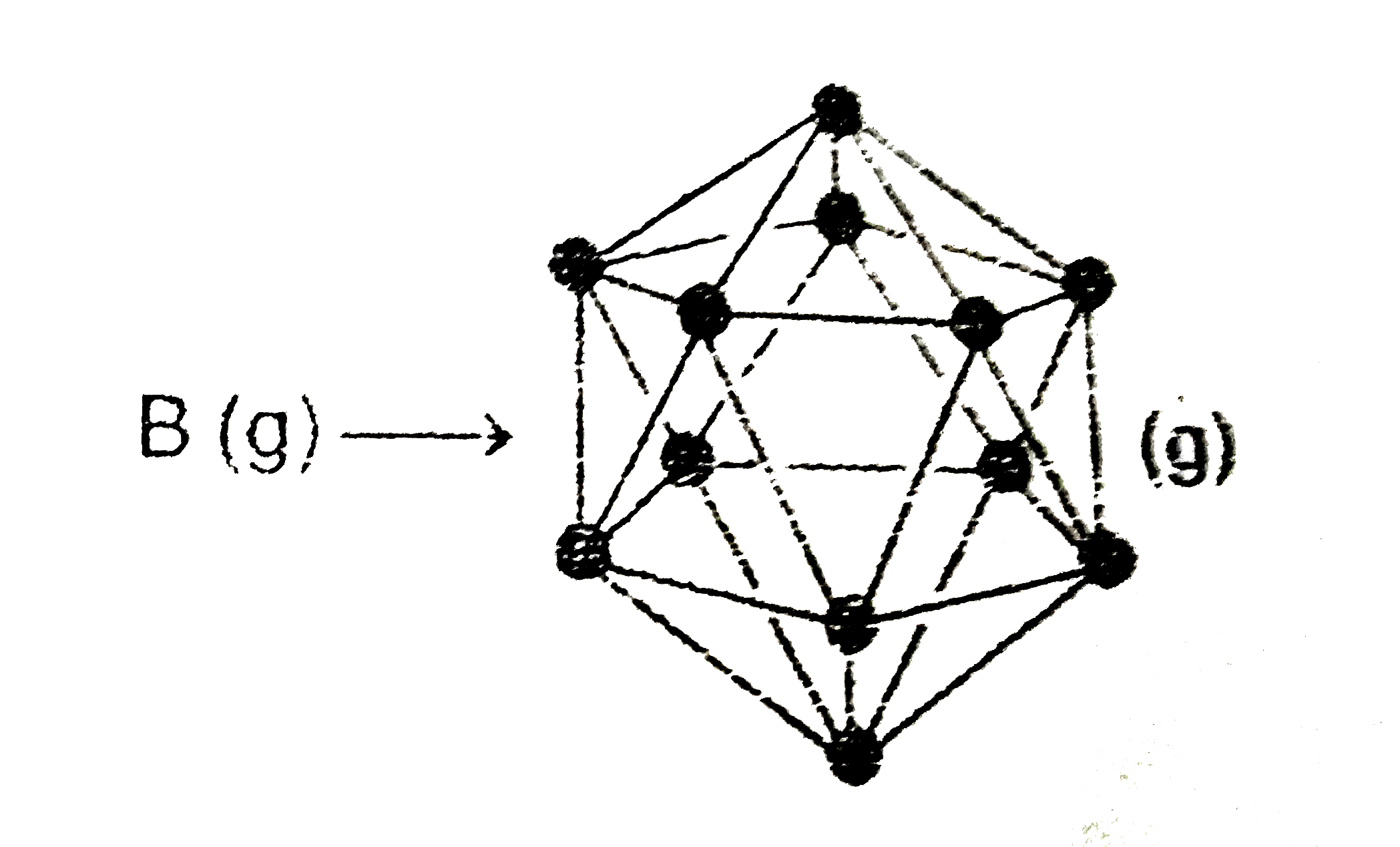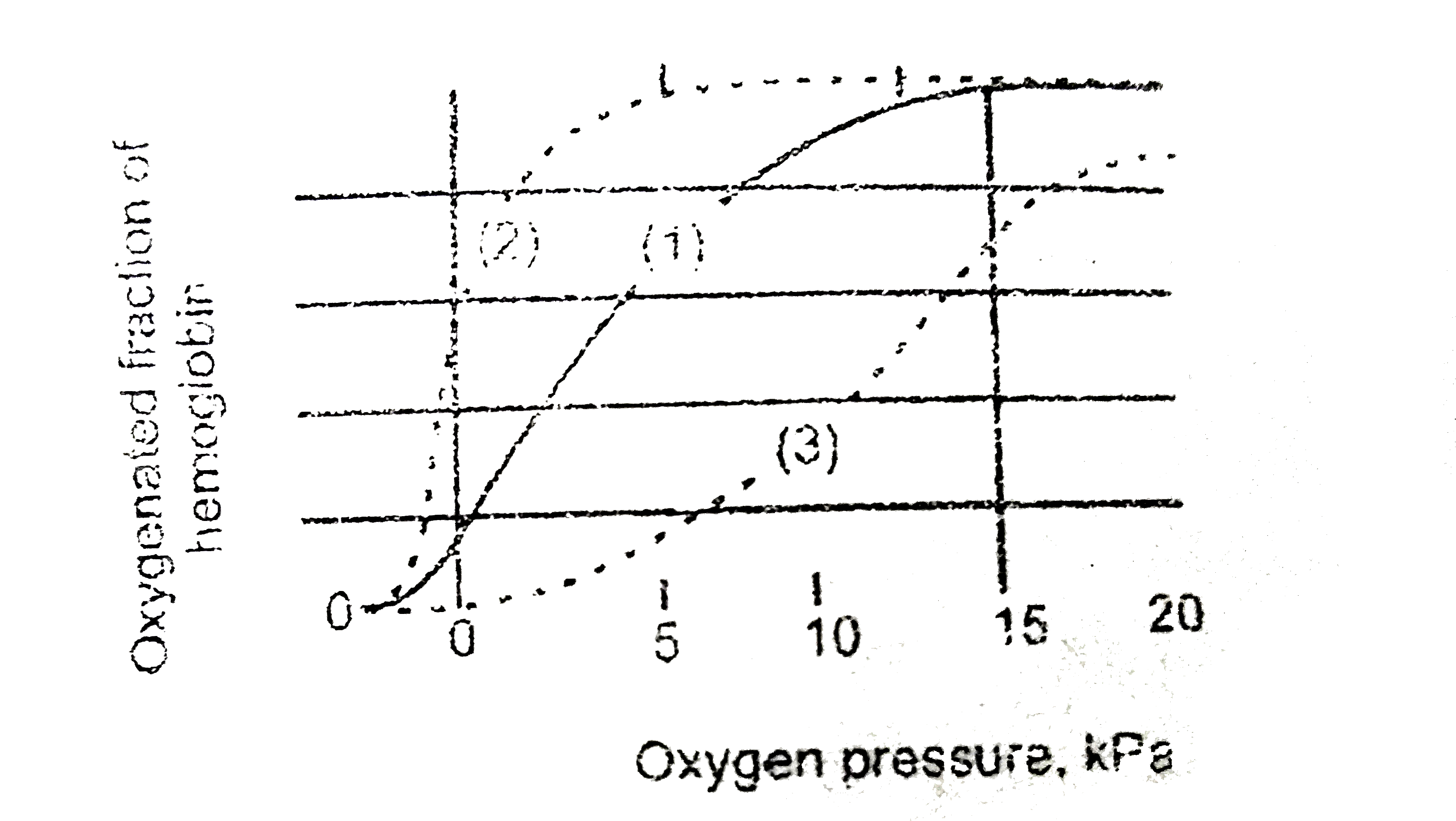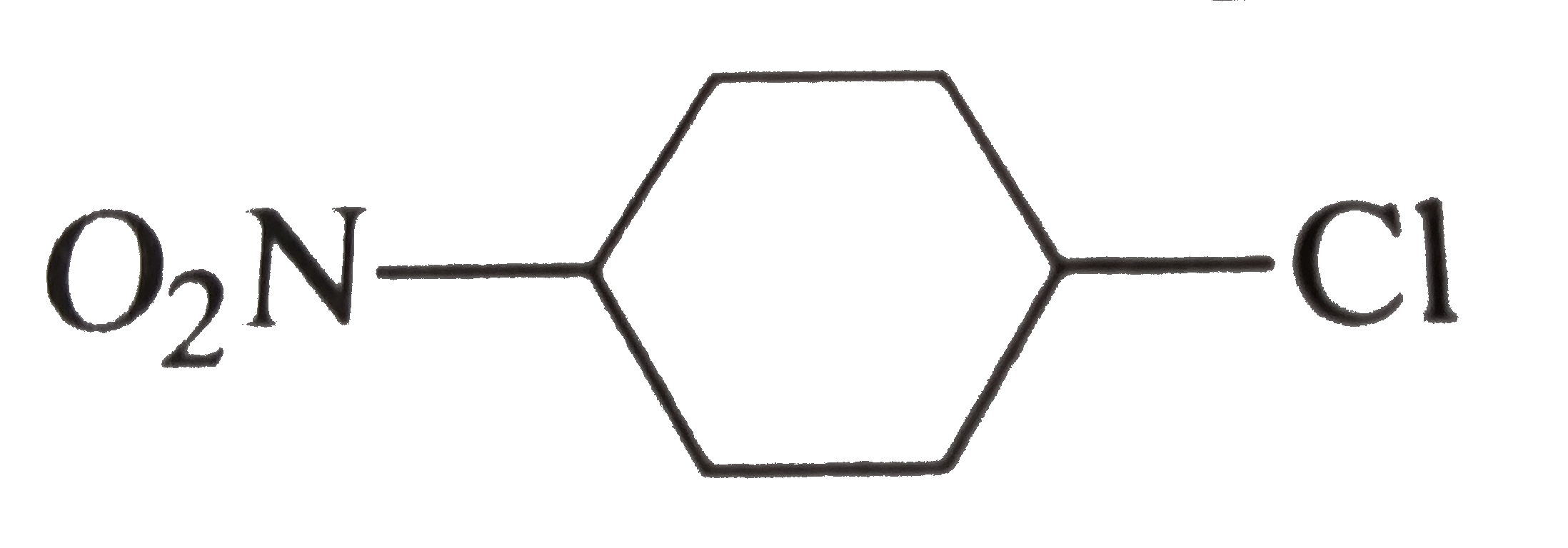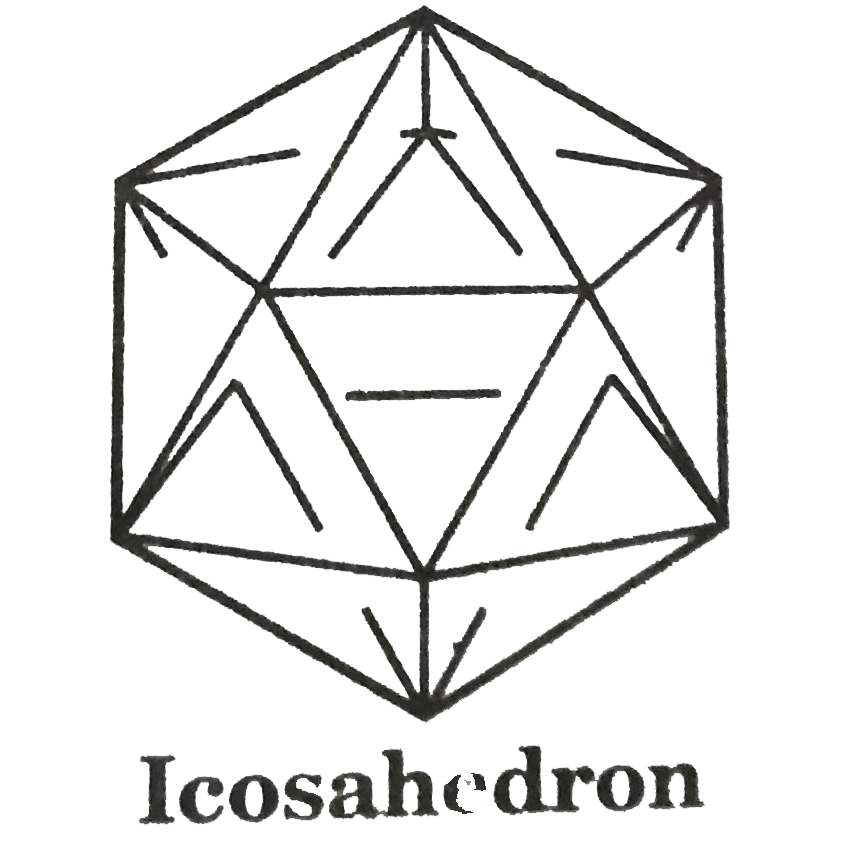Boron exist in different allotropic forms. All allotropic form contains icosahedral units (icosahedral is regular shape with 12 corner & 20 faces) with boron atoms at all 12 corners and all bonds are equivalent.

Calculate heat evolved at constant pressure (in KJ) per mole of boron atoms undergoing above change it ΔHBE(B−B)=200KJ/mol. Report you answer after dividing by 100
The correct Answer is:5
Heat evolved per mol of 'B' atoms =52×200=500KJ
Topper's Solved these Questions
- BOOK - RESONANCECHAPTER - THERMODYNAMICSEXERCISE - exercise-3 part-III Advanced level Solutions (STAGE-I)6videos
THERMODYNAMICS
- BOOK - RESONANCECHAPTER - THERMODYNAMICSEXERCISE - exercise-3 part-III Advanced level Solutions (STAGE-II)45videos
THERMODYNAMICS
- BOOK - RESONANCECHAPTER - THERMODYNAMICSEXERCISE - exercise-3 part-1 Advanced level Solutions30videos
THERMODYNAMICS
- BOOK - RESONANCECHAPTER - TEST SERIESEXERCISE - CHEMISTRY50videos
TEST SERIES
Similar Questions
Oxygen is of vital importance for all of us . Oxygen enters the body via the lungs and is transported to the tissues in our body by blood . There it can deliver energy by the oxidation of sugars.
C6H12O6+6O2→6CO2+6H2O
This reaction releases 400 KJ of energy per mole of oxygen O2 uptake by blood is at four heme (Hm) group in this protein hemoglobin (Hb).
Free Hm consists of an Fe2+ giving HmO2 complex. Carbon monoxides can be complexed similarily giving a Hm CO complex . CO is poison as it bonds more strongly to Hm than O2 does. The equilibrium constant Kf for the reaction:
Hm+CO⇔HCO ........(i)
is 1000 times larger than the equilibrium constant K2 for the reaction:
Hm+CO2⇔HmO2 ........(ii)
Each Hb molecules can take up four molecules of O2 absorbs a fraction of this amount, depending on the oxygen pressure , as shown in figure1 (curve 1) . Also shown are the curve (2) and (3) for blood with two kinds of dificient Hb . These occur in patients with certain hereditary diseases.

Relevant data , O2 pressure in lungs is 15 KPa , in the muscles it is 2KPa . The maximum flow of blood through heart and lungs is 4×10−4m−3s−1 . The red cells in blood occupy 40% of the volume, inside the cells the concentration of Hb has a molar mass of 64 kg mol−1 R=8.314 Jmol−1K−1 , T=298k . Using the relation between K and the standard Gibbs energy ΔG∘ for a reaction, calculated the difference between the ΔG∘ values for the home reactions (i) and (ii).View SolutionThe dipole moment of HBr is 2.6×10−30Cm and interatomic spacing is 1.41A What is the percent ionic character of HBr
(b) A diatomic molecule has μ=1.2D Its bond distance is 1.0A What fraction of electronic charge exists on each atom?
(c ) In water, (H−OH) bond angle is 105∘ The distance between (O−H) is 0.94A.μ of H2O=1.85D Determine the magnitude of the charge on the oxygen atom in water molecule and hydrogen atom
(d) BI3 is a symmetrical planar molecule, all the (B−1) bonds lie at 120∘ of each other. The distance between the I atoms is 3.54 A the radius of covalently bonded I atom is 1.33A Estimate the covalent radius of boron
(e) Calculate the dipole moment of the following compounds
 .View Solution
.View Solution
Knowledge Check
- Question 1 - Select One
Boron exist in different allotropic forms .All allotropic fropm contains icosahedral units (icosahedral is a regular shape with 12 corners and 20 faces ) with boron atoms at all 12 corners and all bonds are equivalent .

Calculate ΔH (n KJ) per mole of boron atoms formating gaseous icosahedron if ΔHBE(B−B)=200KJ/mol:A1000B600C500D250 - Question 2 - Select One
One of the allotropic form of boron is α− rhombohedral boron. Number of faces and corners in its basic building B12 icosahedral unit are:
A20 and 12 respectivelyB12 and 20 respectivelyC12 and 12 respectivelyD20 and 20 respectively - Question 3 - Select One
Four statements are given below:
(P) B2 solid does not exist, boron have basic building B12icosahedral units made up of polyhedron having 20 faces nad 12 corners.
(Q) In alum each metal ion is surrounded by six water molecules.
( R) Graphite is used as dry lubricant in machines running at high temperature in place of oil.
(S) Fullerene contains twenty, six-membered rings and twelve, five-membered rings.
The correct statements are:AP,R and SBP and SCP,Q,R and SDQ and S
The small size and high charge of Al3+ ion gives it a high charge density which is responsible for its tendency to show (a) covalency in its compounds in the gaseous state (b) high hydration energy which stabilizes its compounds in solution, and (c) high lattice energy of its compounds in the solid state. Thus aluminium can forms both covalent and ionic bond.
Like halides of boron, halides of aluminium do not show back bonding because of increase in size of aluminium. Actually aluminium atoms complete their octets by forming dimers. Thus chloride and bromide of aluminium exist as dimers, both in the vapour state and in polar-solvents like benzene while the corresponding boron halides exists as monomer. In boron trihalides the extent of back bonding decreases with increases with increase in size of halogens and thus lewis acid character increases. All BX3 are hydrolysed by water but BF3 shows a different behaviour.
The dimeric structure of aluminium chloride disappears when:View SolutionThe small size and high charge of Al3+ ion gives it a high charge density which is responsible for its tendency to show (a) covalency in its compounds in the gaseous state (b) high hydration energy which stabilizes its compounds in solution, and (c) high lattice energy of its compounds in the solid state. Thus aluminium can forms both covalent and ionic bond.
Like halides of boron, halides of aluminium do not show back bonding because of increase in size of aluminium. Actually aluminium atoms complete their octets by forming dimers. Thus chloride and bromide of aluminium exist as dimers, both in the vapour state and in polar-solvents like benzene while the corresponding boron halides exists as monomer. In boron trihalides the extent of back bonding decreases with increases with increase in size of halogens and thus lewis acid character increases. All BX3 are hydrolysed by water but BF3 shows a different behaviour.
Which of the following statements about anhydrous aluminium chloride is correct ?View SolutionThe small size and high charge of Al3+ ion gives it a high charge density which is responsible for its tendency to show (a) covalency in its compounds in the gaseous state (b) high hydration energy which stabilizes its compounds in solution, and (c) high lattice energy of its compounds in the solid state. Thus aluminium can forms both covalent and ionic bond.
Like halides of boron, halides of aluminium do not show back bonding because of increase in size of aluminium. Actually aluminium atoms complete their octets by forming dimers. Thus chloride and bromide of aluminium exist as dimers, both in the vapour state and in polar-solvents like benzene while the corresponding boron halides exists as monomer. In boron trihalides the extent of back bonding decreases with increases with increase in size of halogens and thus lewis acid character increases. All BX3 are hydrolysed by water but BF3 shows a different behaviour.
Which of the following reaction is incorrect ?View SolutionThe small size and high charge of Al3+ ion gives it a high charge density which is responsible for its tendency to show (a) covalency in its compounds in the gaseous state (b) high hydration energy which stabilizes its compounds in solution, and (c) high lattice energy of its compounds in the solid state. Thus aluminium can forms both covalent and ionic bond.
Like halides of boron, halides of aluminium do not show back bonding because of increase in size of aluminium. Actually aluminium atoms complete their octets by forming dimers. Thus chloride and bromide of aluminium exist as dimers, both in the vapour state and in polar-solvents like benzene while the corresponding boron halides exists as monomer. In boron trihalides the extent of back bonding decreases with increases with increase in size of halogens and thus lewis acid character increases. All BX3 are hydrolysed by water but BF3 shows a different behaviour.
Which one of the following statements is correct ?View Solution

